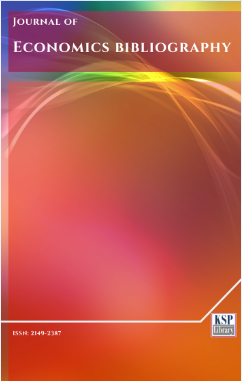Engaging communication and adherence to blood donation. An experiment on the impact of the preparatory act on the manifestation of retroactive behavioral intention in Cameroonian context
Abstract
Abstract. The derailment of the train linking Yaoundé to Douala on October 21, 2016 gave special emotional resonance to the need for blood donation. The high number of victims and the horror of experiencing the loss of a life due to lack of blood has accentuated this issue. The daily calls for blood donations in hospitals, however, do not enjoy the same empathy. As a result, equally moving tragedies unfortunately occur in complete anonymity. The aim of this project is to set up a communication protocol to encourage young adults in our high schools, colleges and universities to give blood. Engaging communication, combined with two types of preparatory acts, is our conceptual basis for addressing this problem. As a result, behavioral induction, employing both narrative and argumentative preparatory acts, leads to the manifestation of the intention to adhere to blood donation in the participants of this study.
Keywords. Intra-industry trade; Imperfect competition; Classical theories of trade.
JEL. F11; F12; F13.Keywords
References
Bernard, F., & Joule, R.V. (2005). Methodological pluralism in information and communication sciences tested by engaging communication. Questions de communication, 7, 185-208. doi. 10.4000.questionsdecommunication.4647
Bourg, G. (2011). The contribution of engaging communication and social representations in the promotion of eco-mobility (2001). Master's thesis, University of Burgundy. [Retrieved from].
Cialdini, R.B., Martin, S.J., & Goldstein, N.J. (2015). Small behavioral science-informed changes can produce large policy-relevant effects. Behavioral Science & Policy, 1(1), 21-27.
Decree No. 2019/067 of February 12, 2013, on the organization and functioning of the National Blood Transfusion Center. [Retrieved from].
Eyssartier, C., Joule, R.-V., & Guimelli, C. (2007). Behavioral and cognitive effects of engagement in a preparatory act activating a central versus peripheral element of organ donation representation. Psychologie Française, 52, 499-517. doi. 10.1016/j.psfr.2007.01.004
Michelik, F. (2011). Engaging communication: Effects on cognitive and behavioral dimensions. Doctoral thesis, University of Franche-Comté.
Morgan, S.E., Movius, L., & Cody, M.J. (2009). The power of narratives: The effect of entertainment television organ donation storylines on the attitudes, knowledge, and behaviors of donors and non-donors. Journal of Communication, 59(1), 135-151. doi. 10.1111/j.1460-2466.2008.01408.x
Noah Owona, A. (2017, October 27). Sociological study of blood donors and non-donors in Cameroon. [Conference]. Communication to the French Blood Transfusion Society in Bordeaux. [Retrieved from].
Oatley, K. (1999). Why fiction may be twice as true as fact: Fiction as cognitive and emotional simulation. Review of General Psychology, 3(2), 101-117. doi. 10.1037/1089-2680.3.2.101
Wegener, D. M., Vallacher, R. R. (1986). Action identification in Sorrentino (Eds). Handbook of motivation and cognition: Foundations of social behavior (pp.550-582). New York: Guilford.
DOI: http://dx.doi.org/10.1453/jeb.v10i1-2.2439
Refbacks
- There are currently no refbacks.
.......................................................................................................................................................................................................................................................................................................................................
Journal of Economics Bibliography - J. Econ. Bib. - JEB - www.kspjournals.org
ISSN: 2149-2387.
Editor: jeb@ksplibrary.org Secretarial: secretarial@ksplibrary.org Istanbul - Turkey.
Copyright © KSP Library

